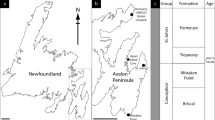Abstract
One of the most hotly debated and frontal issues in paleoanthropology focuses on the origins of modern humans. Recently, an incomplete hominin mandible with a distinctly weaker mental protuberance than modern human and a great variety of coexisting fossil mammals were unearthed from the Homo sapiens Cave of Mulan Mountain, Chongzuo, Guangxi. The mammalian fauna from the Homo sapiens Cave characterized by the combination of Elephas kiangnanensis, first occurring Elephas maixmus, and Megatapirus augustus, and strikingly different from the Early Pleistocene Gigantopithecus fauna and the Middle Pleistocene Ailuropoda-Stogodon fauna of South China could be regarded as an early representive of the typical Asian elephant fauna. Faunal analysis, biostratigraphic correlation, and, most importantly, U-series dating all consistently support an estimate of ca. 110 ka for the age of the fossil Homo sapiens and coexisting mammalian fauna, that is, the early Late Pleistocene. The fauna is mainly made up of tropical-subtropical elements, but grassland elements have a much greater variety than forest elements, which probably indicates a drier climate at that time. This discovery of early Homo sapiens at the Mulan Mountain will play a significant role in the study of the origin and its environmental background of modern humans.
Similar content being viewed by others
References
Cann R L, Stoneking M, Wilson A C. Mitochondrial DNA and Human Evolution. Nature, 1987, 325: 31–36
Wu X Z. Origin of modern humans of China viewed from craniodental characteristics of late Homo sapiens in China. Acta Anthropol Sin, 1998, 17: 276–282
Stringer C B. Modern human origins: progress and prospects. Phil Trans R Soc Lond B, 2002, 357: 563–579
Wolpoff M H, Hawks J, Frayer D, et al. Modern human ancestry at the peripheries: A test of the replacement theory. Science, 2001, 291: 293–297
White T D, Asfaw B, DeGusta D, et al. Pleistocene Homo sapiens from Middle Awash, Ethiopia. Nature, 2003, 423: 742–747
Wu X Z, Liu W, Gao X, et al. Huanglong Cave, a new late Pleistocene hominid site in Hubei Province, China. Chinese Sci Bull, 2006, 51: 2493–2499
Gao X, Huang W P, Xu Z Q, et al. 120–150 ka human tooth and ivory engravings from Xinglongdong Cave, Three Gorges Region, South China. Chinese Sci Bull, 2004, 49: 175–180
Huang W B, Xu Z Q. The Fengjie Man of 14000 years old: An Ancient Human Site Fount at Tiankeng-Difeng Region. Beijing: Zhonghua Book Company, 2002. 1–83
Anne-Marie Bacon, Demeter F, Duringer P, et al. The Late Pleistocene Duoi U’Oi cave in northern Vietnam: palaeontology, sedimentology, taphonomy and palaeoenvironments. Quat Sci Rev, 2008, 27: 1627–1654
Jin C Z, Qin D G, Pan W S, et al. A newly discovered Gigantopithecus fauna from Sanhe Cave, Chongzuo, Guangxi, South China. Chinese Sci Bull, 2009, 54: 788–797
Maglio V J. Origin and evolution of the Elephantidae. Trans Amer Phil Soc, 1973, 63: 1–149
Huang W B, Fang Q R, et al. Wushan Hominid Site (in Chinese). Beijing: Science Press, 1991. 1–205
Pei W Z. Carnivora, Proboscidea and Rodentia from Liucheng Gigantopithecus Cave and other caves in Guangxi (in Chinese). Memoirs of Institute of Vertebrate Paleontology and Paleoanthropology, Academia Sinica, No. 18. Beijing: Science Press, 1987. 5–134
Wang W, Poots R, Hou Y M, et al. Early Pleistocene hominid teeth recovered in Mohui cave in Bubing Basin, Guangxi, South China. Chinese Sci Bull, 2005, 50: 2777–2782
Zheng S H. Jianshi Hominid Site (in Chinese). Beijing: Science Press, 2004. 1–412
Olsen J W, Ciochon R L. A review of evdence for postlated Middle Pleistocene occupations in Viet Nam. J Hum Evol, 1990, 19: 761–788
Chen G J, Wang W, Mo J Y, et al. Pleistocene vertebrate fauna from Wuyun cave of Tiandong County, Guangxi. Vertebrata PalAsiatica, 2002, 40: 42–51
Walliser O H. Global events in the Devonian and Carboniferous. In Walliser O H, ed. Global Events and Event Stratigraphy in the Phanerozoic. Berlin, Heidelberg, New York: Springer-Verlag, 1996. 1–333
Repenning C A. Biochronology of the microtine rodents of the United States. In: Woodburne M C ed. Cenozoic Mammals of North America. Berkely, Los Angles, London: University of California Press, 1987. 236–268
Liu T S, Shi Y F, Wang R J, et al. Table of Chinese Quaternary Stratigraphic correlation remarked with climate change. Quat Sci, 2000, 20: 108–128
Author information
Authors and Affiliations
Corresponding author
Additional information
Supported by the Key Knowledge Innovation Project of the Chinese Academy of Sciences (Grant No. KZCX2-YW-106) and National Basic Research Program of China (Grant No. 2006CB806400)
About this article
Cite this article
Jin, C., Pan, W., Zhang, Y. et al. The Homo sapiens Cave hominin site of Mulan Mountain, Jiangzhou District, Chongzuo, Guangxi with emphasis on its age. Chin. Sci. Bull. 54, 3848–3856 (2009). https://doi.org/10.1007/s11434-009-0641-1
Received:
Accepted:
Published:
Issue Date:
DOI: https://doi.org/10.1007/s11434-009-0641-1




